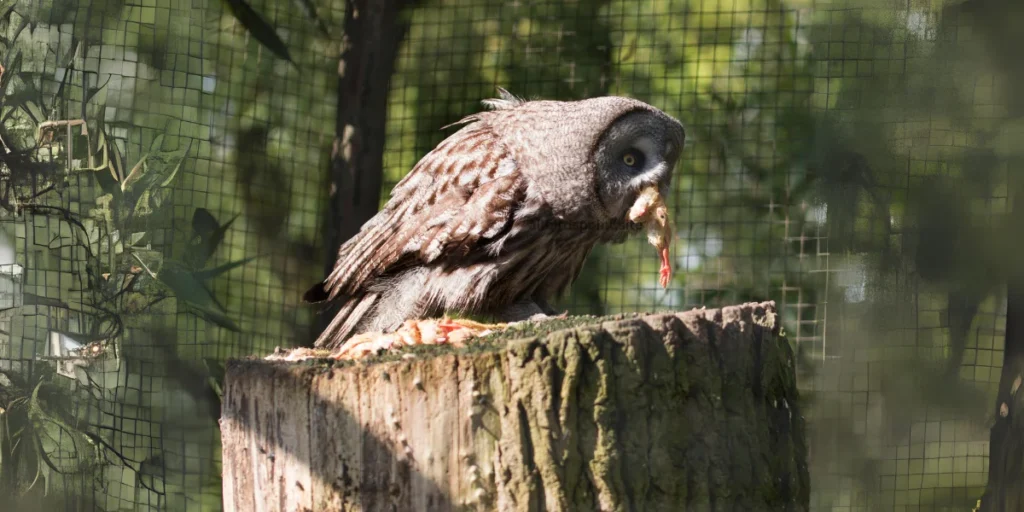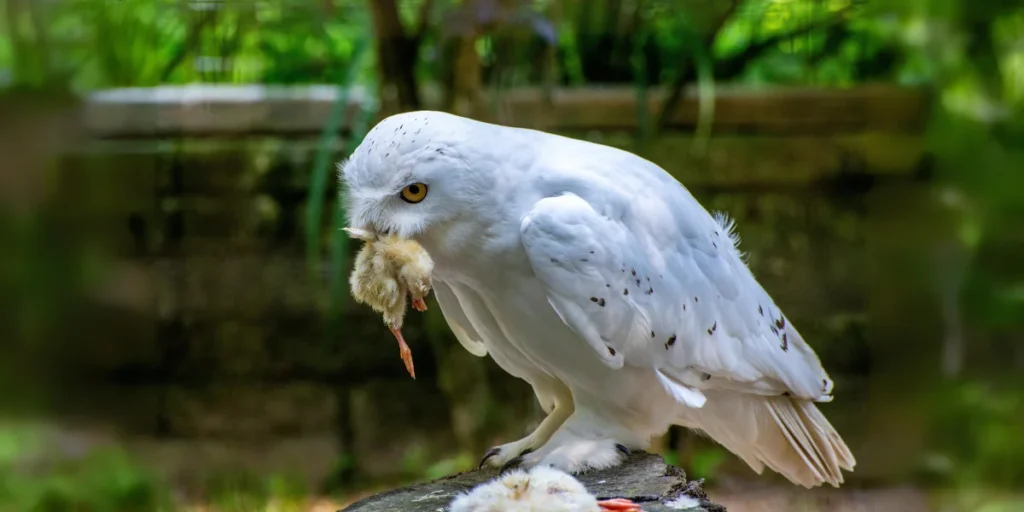Owls are fascinating birds of prey known for their silent flight and nocturnal hunting habits. While small mammals like mice and voles make up the bulk of their diet, many people wonder if owls eat other birds as well. The answer is yes—owls do eat birds, although it’s not their primary food source. This article will dive deep into how often owls eat birds, what types of birds they target, and how they manage to catch these fast and agile creatures.
How Often Do Owls Eat Birds?
Owls are opportunistic hunters, meaning they adapt their diet based on what’s available in their habitat. In general, birds make up about 10% of an owl’s diet. This might not sound like a lot, but since owls need to eat regularly to survive, they still consume a significant number of birds each year. In fact, the exact number of birds an owl eats depends on several factors, including the species of the owl, the time of year, and the local bird population.
Seasonal Hunting Patterns
Owls hunt birds more frequently during certain times of the year, particularly in the spring. Spring is nesting season for many bird species, and this provides owls with plenty of vulnerable nestlings and juveniles to prey on. During the winter, on the other hand, birds are harder to find, and owls tend to rely more on small mammals like rodents.
This seasonal variation in diet is largely due to the hunting methods owls use, which we’ll explore in more detail later.
| Season | Percentage of Birds in Diet | Primary Prey Focus |
|---|---|---|
| Spring | 20% | Nestlings, Juveniles |
| Summer | 15% | Adult Birds, Mammals |
| Fall | 5% | Mammals |
| Winter | 0-2% | Small Mammals |
As shown in the table above, the highest percentage of birds in an owl’s diet is during spring, when young and inexperienced birds are more abundant.

What Types of Birds Do Owls Eat?
Not all bird species are equally likely to be eaten by owls. The size of the owl plays a big role in determining what types of birds it can catch and eat. While owls will occasionally prey on adult birds, many of the birds they eat are juveniles or nestlings. These young birds are easier to catch since they haven’t yet developed the strong flight skills needed to escape predators.
Large Owls
Large owls like the great horned owl or the great gray owl are capable of taking down large birds, including ground-dwelling species and even other birds of prey. Because of their size and strength, large owls focus on making their efforts worthwhile by going after bigger birds that provide more food.
Here are some examples of birds that large owls typically eat:
- Grouse
- Pheasants
- Quail
- Chickens
- Smaller owls
- Smaller hawks
It’s important to note that great horned owls are known to hunt other owls and even hawks. This is often due to competition for territory and nesting sites.
Medium-Sized Owls
Medium-sized owls, such as the barred owl, tend to focus on birds that are slightly smaller, but they still occasionally hunt larger game birds like chickens and pheasants. However, they are more likely to target common songbirds and woodpeckers that are plentiful in wooded areas.
Examples of birds medium-sized owls eat include:
- Songbirds
- Woodpeckers
- Gamebirds (Chickens, pheasants, grouse, quail)
- Other owls and hawks
Barred owls are also opportunistic hunters and may hunt birds of prey if they find a vulnerable target, but their diet is mostly made up of songbirds and other small birds.
Small Owls
Smaller owls, like the pygmy owl, primarily target the smallest and most abundant bird species, including tiny songbirds. Because small birds gather in large numbers, these owls take advantage of their abundance.
Some of the bird species that small owls hunt include:
- House sparrows
- Pine siskins
- Finches
- Wrens
Small owls rely heavily on dense populations of small birds to fulfill their dietary needs, and they are particularly good at catching birds that roost in large groups.
| Owl Size | Common Bird Prey | Hunting Focus |
|---|---|---|
| Large Owls | Grouse, Pheasants, Hawks | Ground Birds, Raptors |
| Medium-Sized Owls | Songbirds, Woodpeckers | Songbirds, Gamebirds |
| Small Owls | Sparrows, Finches | Small Songbirds |
Do owls eat baby birds?
Yes, owls do eat baby birds. In fact, nestlings and juvenile birds are easier for owls to catch than adult birds, making them a common target, especially during the spring nesting season. Owls are opportunistic hunters, meaning they take advantage of whatever prey is easiest to catch. Since baby birds are often confined to their nests and lack the ability to fly or evade predators, they become vulnerable to owl attacks.

Owls may raid bird nests to feed on baby birds, particularly at night when they have the advantage of their excellent night vision and silent flight. Larger owl species, like the great horned owl, are especially known for raiding nests to capture young birds. This behavior is a natural part of the food chain, helping owls survive and controlling bird populations in the ecosystem.
How Do Owls Catch Birds?
Now that we’ve covered what types of birds owls eat, let’s look at how they manage to catch these swift and often elusive creatures. Owls are specialized hunters with several adaptations that make them highly efficient predators, particularly at night.
Perch Hunting
Owls are perch hunters, meaning they sit still and watch for prey from an elevated position, such as a tree branch. Once they spot a bird or other prey, they silently swoop down and attempt to grab it with their sharp talons.
If the bird escapes on the first attempt, owls are capable of short, rapid chases. However, their success rate drops significantly the longer the chase continues. This is why their perch-and-wait strategy is so effective—they wait for the perfect moment to strike when the bird is unaware.
Nocturnal Hunting
Owls are most active at night, which gives them a major advantage over their prey, especially birds that are more active during the day. Owls have exceptional night vision, allowing them to see in low-light conditions where most birds cannot. This enables them to hunt with incredible precision at night.
Many birds, particularly diurnal (daytime) birds, have limited vision in the dark. This makes them easy targets for owls when they are roosting at night. Owls are known to pluck diurnal birds from their roosts while they are sleeping, which minimizes the chance of escape.
Silent Flight
One of the key reasons owls are such effective hunters is their ability to fly silently. Unlike many other birds of prey, owls have special feathers that reduce the sound of their wings flapping. This allows them to approach their prey without being heard, giving them a significant advantage when hunting birds that rely on hearing to detect threats.
Nest Raiding
In addition to hunting adult birds, owls frequently raid bird nests, particularly during the spring nesting season. Nestlings and juvenile birds are much easier to catch than fully grown adults, making them a prime target for owls. By raiding nests, owls can feed on multiple birds at once, providing a significant boost to their food intake.

How Birds Defend Themselves from Owls
Birds have developed a variety of strategies to defend themselves from owl attacks. During the daytime, when most birds are active, they rely on their speed and agility to escape predators. Adult birds are also highly vigilant and can detect the presence of owls in their environment through visual and auditory cues.
Mobbing Behavior
One of the most effective defense strategies birds use against owls is mobbing. This involves a group of birds banding together to harass an owl, often by swooping at it, calling loudly, and trying to drive it away. Mobbing is particularly effective during the day when owls are less active and more vulnerable to group attacks.
Alarm Calls
Birds also communicate with each other using alarm calls when they detect a predator. These calls alert other birds in the area to the presence of an owl, giving them time to hide or take flight. Alarm calls are common in songbird species, which often live in large flocks.
Roosting in Safe Locations
During the night, birds roost in concealed or hard-to-reach places to avoid being snatched by owls. Birds that roost in open areas or visible spots are more likely to be targeted by nocturnal predators. As a result, many birds choose dense foliage or small cavities to roost in, reducing their exposure to owls.
The Role of Owls in Bird Population Control
While owls may seem like a threat to bird populations, they play an important role in maintaining ecological balance. By preying on weak, sick, or inexperienced birds, owls help ensure that only the strongest individuals survive and reproduce. This natural form of population control helps prevent the spread of disease and maintains a healthy bird population.
Additionally, owls help control the populations of other birds of prey, such as smaller owls and hawks. By keeping these populations in check, owls indirectly help maintain a balanced ecosystem.
Conclusion
Owls are opportunistic hunters that include birds in their diet, though the frequency and type of birds they eat vary depending on the owl species and the season. Large owls hunt bigger birds like grouse and even other owls, while smaller owls focus on tiny songbirds. Owls use their excellent night vision, silent flight, and stealthy hunting techniques to catch birds, especially during the night and nesting seasons. Birds defend themselves through speed, mobbing, and alarm calls, but owls remain a formidable predator in the bird world.
Understanding these behaviors can offer a deeper appreciation for the role owls play in their ecosystems and their complex relationship with their prey.

1 thought on “Do Owls Eat Birds? Discover How and Why Owls Hunt Birds”